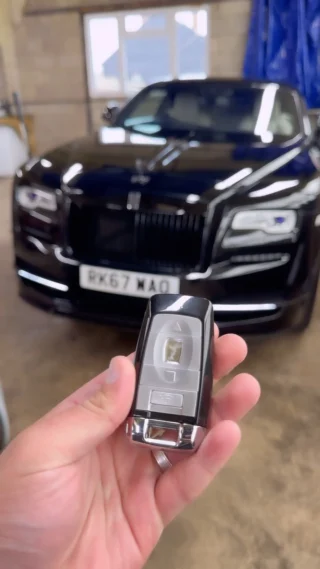car-key-transponder-replacement2595
car-key-transponder-replacement2595
25 Amazing Facts About Door Lock Repair
Comprehensive Guide to Car Door Lock Repair: Troubleshooting and Solutions
The integrity and performance of a vehicle’s door locks are vital for both the security of the car and the safety of its occupants. Car door locks can experience a variety of concerns, varying from small mechanical glitches to finish failures. This short article seeks to supply a helpful summary of car door lock repair, outlining common problems, diagnostic procedures, and solutions.
Understanding Car Door Locks
Before diving into repair treatments, it is essential to comprehend the parts of a typical car door lock. There are two main types of locks: mechanical and electronic.
Components of a Car Door Lock System
- Lock Cylinder: The part where the key is placed.
- Latches: Mechanisms that hold the door shut.
- Actuator: Electric motor in electronic locks that helps in locking and opening.
- Linkage: Connects the lock cylinder to the lock.
- Remote Key Fob: In electronic systems, this is utilized to lock and unlock the doors from a distance.
Common Issues with Car Door Locks
Car door locks can fail for a wide variety of reasons. Here are some common issues experienced by vehicle owners:
- Sticking or Frozen Locks: Especially in cold weather, locks can become hard to run.
- Lock Not Engaging or Disengaging: Both mechanical and electronic locks can deal with issues where they do not react to the key or remote.
- Key Jams: The key might get stuck in the lock, making it difficult to lock or unlock the door.
- Remote Malfunction: In electronic systems, the key fob may not work due to battery problems or programming issues.
- Physical Damage: Vandalism or accidents can damage the lock mechanism.
Repairing Car Door Lock Issues
When a car door lock is not functioning correctly, it is very important to diagnose the problem precisely before continuing with a repair. Below are actions that can assist repair the issue:
Step-by-Step Troubleshooting
-
Visual Inspection:
- Check the door lock and surrounding parts for noticeable damage.
- Analyze the key for wear and tear.
-
Check the Key:
- If the lock is sticking or not engaging, try utilizing a spare key if offered.
- Guarantee the key is clean from dirt and debris.
-
Check the Actuator:
- Listen for any sounds when pressing the key fob. A clicking noise might indicate a malfunctioning actuator.
-
Examine Door Wiring:
- Check the wiring that links the door lock to the vehicle’s electrical system.
- Search for detached or frayed wires.
-
Temperature level Influence:
- If the lock is sticking in winter, use lithium grease to assist lubricate the system.
Repairing Common Door Lock Issues
As soon as the issue has been diagnosed, the repair can begin. Here are some common repair strategies for different issues:
Fixing a Sticking or Frozen Lock
- Cleaning up: Use a graphite lubricant or silicone spray to clean and lubricate the mechanism.
- Heating: If frozen, use a hairdryer to warm the area around the locking mechanism carefully, avoiding overheating.
Fixing a Lock Not Engaging/Disengaging
-
Lock Cylinder Replacement:
- If the lock cylinder is used, consider changing it. This often involves prying off the door panel to access the lock mechanism.
-
Actuator Replacement:
- For electronic locks, if the actuator is faulty, it will require replacement. Ensure to disconnect the battery before trying this repair.
Repairing a Jammed Key
- Extraction Tool: If a key is stuck, use a set of needle-nose pliers to carefully pull it out, or a key extractor.
- Lock Lubrication: Apply a percentage of lubricant to alleviate the procedure.
Remote Key Fob Malfunction
- Battery Replacement: Most remotes have exchangeable batteries. Follow the manufacturer’s instructions to change the battery.
- Reprogramming: Sometimes, the remote requirements to be reprogrammed. Describe the vehicle’s handbook for actions to reprogram the key fob.
Physical Damage Repairs
- Door Lock Assembly Replacement: If the lock is physically harmed, complete replacement of the lock assembly may be necessary.
- Expert Help: If uncertain about DIY repairs, look for help from a certified mechanic.
Maintenance Tips for Car Door Locks
To lengthen the life of car door locks, routine maintenance is important. The following practices can assist maintain ideal performance:
- Regular Lubrication: Apply proper lubricant to the locks every couple of months.
- Keep Keys Clean: Regularly tidy the car keys to avoid dirt buildup.
- Avoid Excessive Force: Do not use excessive force when locking or unlocking; this can trigger damage in time.
- Expect Signs of Wear: Be attentive to any changes in the lock’s efficiency and address concerns immediately.
FAQs about Car Door Lock Repair
Q: How can I tell if my door lock is broken?A: Common
signs consist of the lock not engaging or disengaging, a jammed key, sounds from the door when utilizing the key fob, or visible damage to the lock assembly.
Q: Can I repair a car door lock myself?A: Yes, many easy issues can be dealt with by following the fixing actions in this post, however complex issues may need expert help. Q: What kind of lubricant ought to I utilize
for my locks?A: It is best to use graphite powder or silicone-based lubes considering that oil can attract dirt and grime. Q: How much does it usually cost to replace a car door lock?A: The cost can vary extensively
based on the vehicle’s make and model, however normal replacement expenses
can vary from ₤ 100 to ₤ 300, consisting of labor. car door lock repair (Learn Even more) can seem challenging, but understanding the parts and common concerns can make the process far more workable. Whether dealing with little repairs yourself or looking for expert support for more significant problems, keeping the door locks working effectively is essential for vehicle security and safety. Routine maintenance and prompt attention to issues can significantly extend the life of your car’s locking system.


